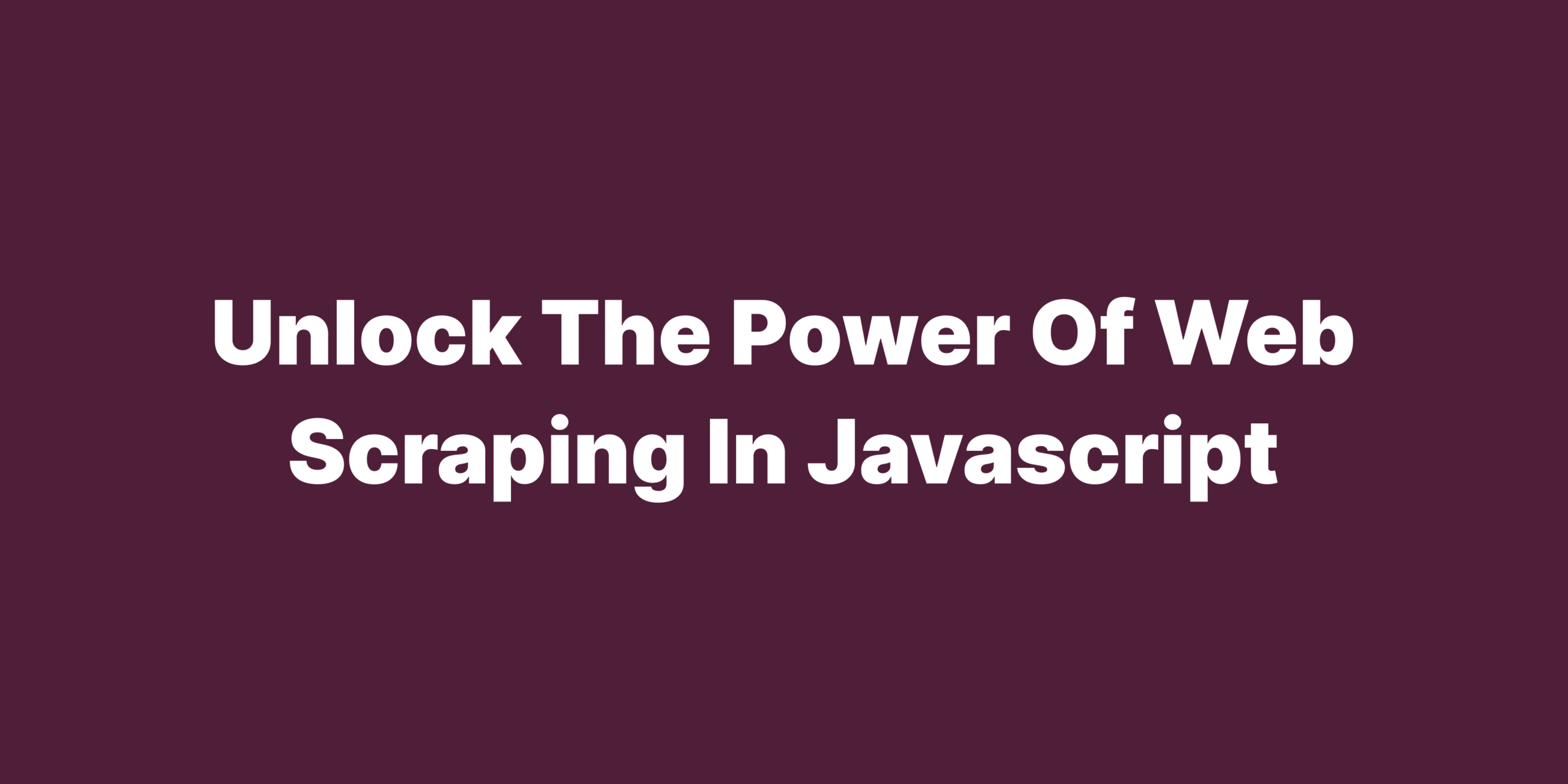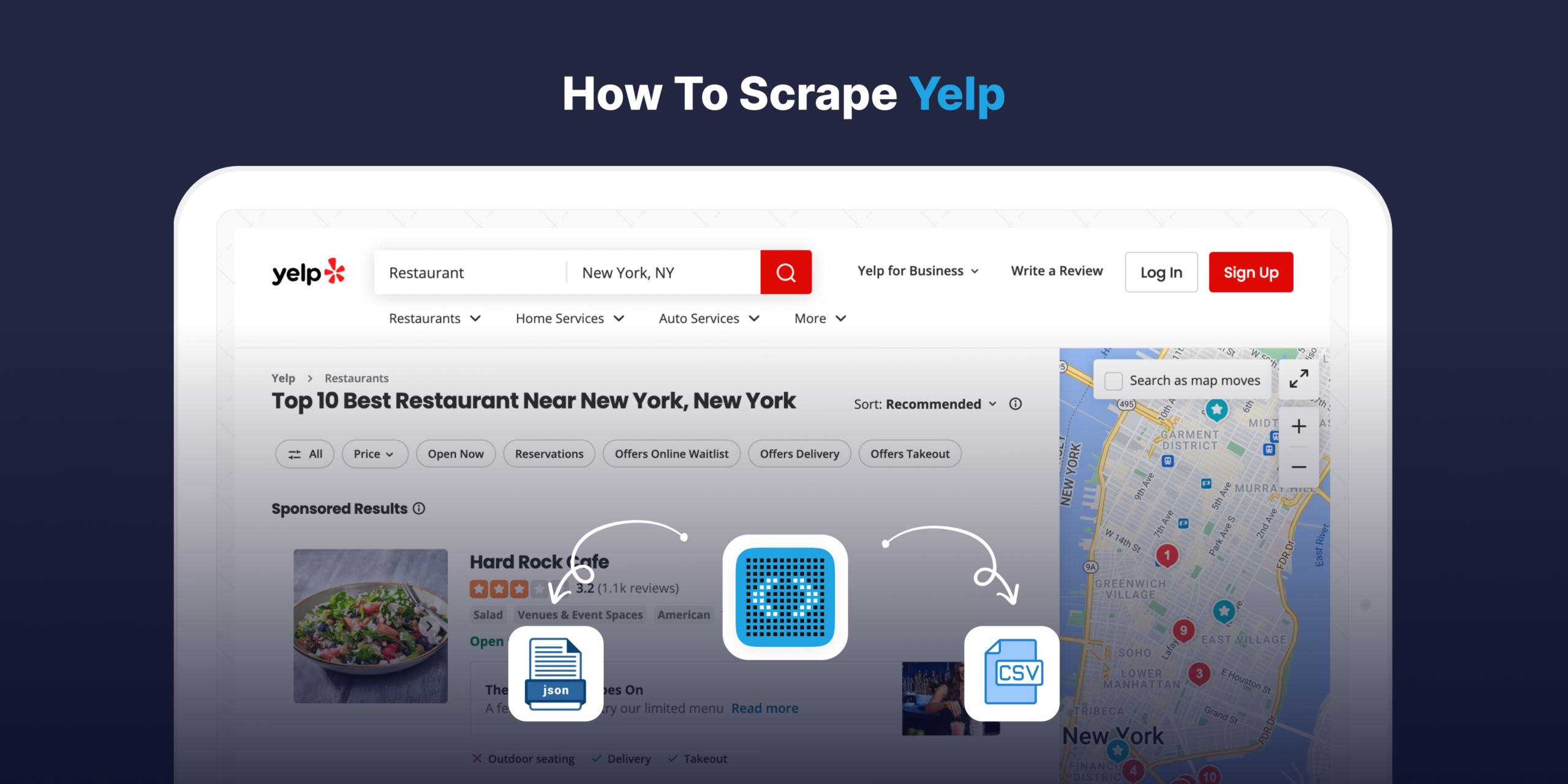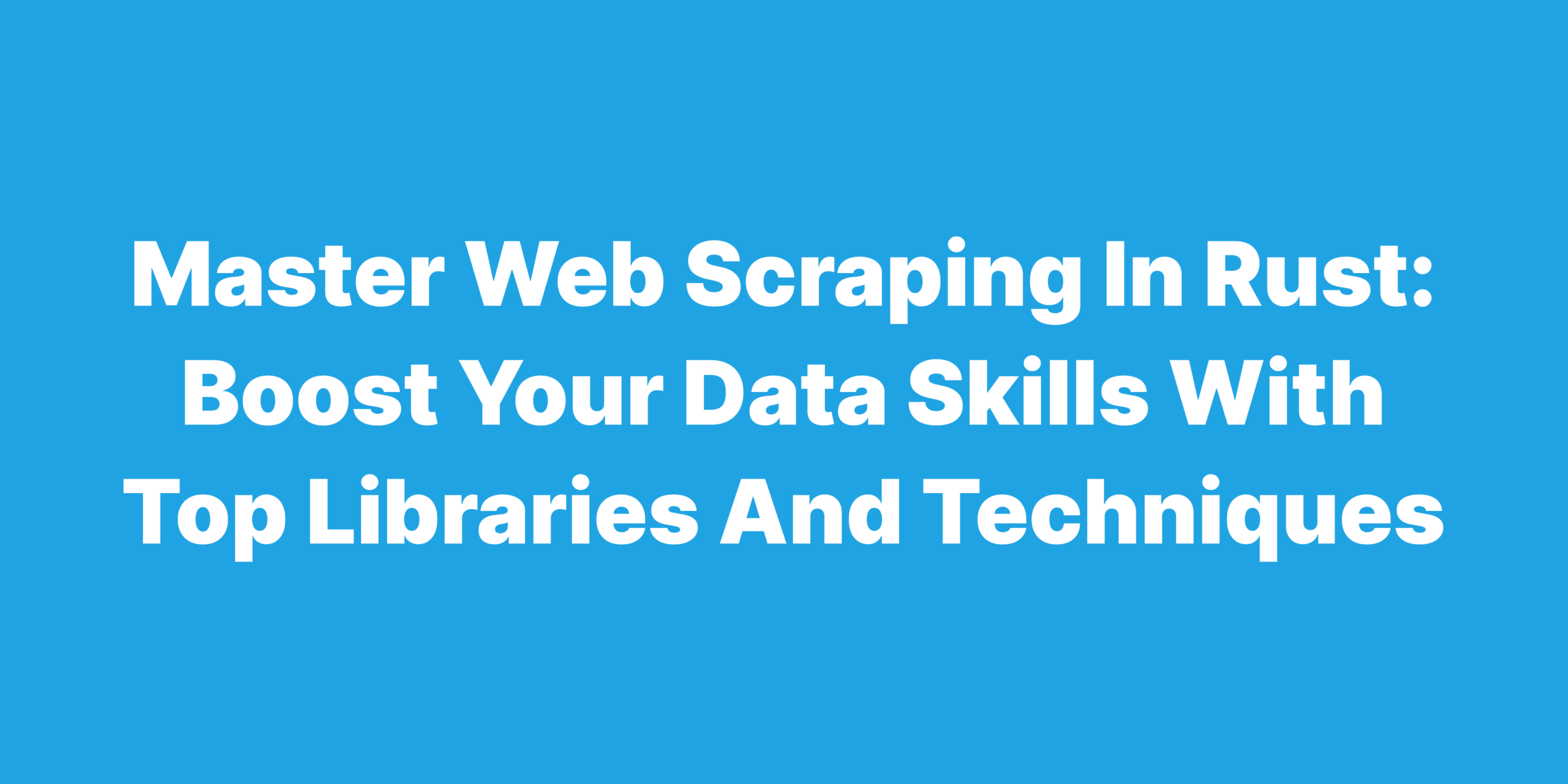The digital age has transformed web scraping into a vital technique for siphoning off valuable data from the internet’s vast resources, enabling individuals and businesses alike to forge data-driven strategies with precision. By leveraging JavaScript for web scraping, developers can automate the collection of web data, from prices and product information to social media insights and beyond. This approach not only accelerates the data acquisition process but also enhances accuracy and efficiency, empowering users to harness the full potential of web data for analytical and strategic purposes. With the right tools and techniques, including the best web scraping API, JavaScript can be your gateway to unlocking a treasure trove of data, facilitating informed decision-making and innovative solutions in today’s competitive landscape.
Getting Started with Web Scraping in JavaScript
JavaScript has become an increasingly popular choice for web scraping due to its versatility and widespread use in web development. Being a client-side scripting language, JavaScript can interact with web pages dynamically, allowing for efficient extraction of data from websites. Moreover, with the advent of Node.js, JavaScript can also be used on the server-side, further expanding its potential in web scraping applications.
Before diving into web scraping, it’s essential to set up the appropriate environment. To get started, ensure you have Node.js installed on your system, as this allows you to execute JavaScript outside of the browser. Next, choose a suitable Integrated Development Environment (IDE), such as Visual Studio Code or Atom, which will provide you with the necessary tools to write and debug your code. Additionally, you’ll need to install packages or libraries specifically designed for web scraping, such as Axios for making HTTP requests and Cheerio for parsing HTML.
Understanding basic web scraping concepts is crucial for a successful web scraping project. At its core, web scraping involves sending HTTP requests to the target website and downloading its HTML content. Once the content is retrieved, you can parse the HTML and extract the data you’re interested in. It’s important to familiarize yourself with the structure of HTML documents, as well as techniques for selecting and manipulating HTML elements, such as using CSS selectors or XPath. By grasping these fundamental concepts, you’ll be well on your way to mastering web scraping in JavaScript.
Identifying HTML Objects by ID in Javascript
HTML objects, also known as elements, are the building blocks of a web page and are crucial to web scraping. They represent different parts of a page’s content, such as headings, paragraphs, links, images, and more. When web scraping, you’ll need to interact with these HTML objects to extract the data you’re interested in. Identifying HTML objects accurately is essential to ensure the reliability of your web scraping results, and one common method of doing so is by using their unique ID attribute.
In JavaScript, you can identify HTML objects by their ID attribute using the getElementById() method, which is part of the Document Object Model (DOM) API. This method returns a reference to the first element with the specified ID, allowing you to interact with the element and extract its contents. Since ID attributes are meant to be unique within a page, this method provides a precise way to locate specific elements you want to scrape.
For example, consider a web page with an element like <div id="price">$100</div>. To extract the price value from this element using JavaScript, you can do the following:
const element = document.getElementById('price');
const price = element.textContent;
console.log(price); // Output: $100In this example, the getElementById() method locates the ‘price’ element, and the textContent property extracts the text content of the element. By understanding how to identify HTML objects by ID in JavaScript, you’ll be better equipped to accurately target and extract data from web pages during your web scraping projects.
The 5 Best Javascript Libraries For Web Scraping
When it comes to web scraping in JavaScript, several powerful libraries can help streamline the process and improve your efficiency. These libraries often provide built-in functions and tools that simplify tasks such as making HTTP requests, parsing HTML, and extracting data from web pages.
Here is a comparison of the 5 best libraries for web scraping in JavaScript:
Puppeteer
Pros
- Provides a high-level API to control headless Chrome or Chromium browsers.
- Supports dynamic web pages, including JavaScript rendering.
- Offers various browser automation features, such as taking screenshots and generating PDFs.
Cons
- Can be resource-intensive due to the use of a full browser.
- Steeper learning curve compared to simpler libraries.
- May require additional setup and configuration to run properly.
Cheerio
Pros
- Lightweight, fast, and efficient for parsing and manipulating HTML.
- Familiar jQuery-like syntax for selecting and traversing elements.
- Ideal for extracting data from static web pages.
Cons
- Does not support JavaScript rendering for dynamic web pages.
- Limited to server-side web scraping with Node.js.
- May require additional libraries for handling HTTP requests.
Axios
Pros
- Promise-based HTTP client for making requests and handling responses.
- Lightweight and easy to use, with a simple API.
- Supports both client-side and server-side web scraping.
Cons
- Limited to handling HTTP requests and does not include HTML parsing.
- May require additional libraries for handling cookies and sessions.
- No built-in support for JavaScript rendering.
jsdom
Pros
- Provides a DOM implementation in pure JavaScript for parsing and manipulating HTML.
- Enables running scripts and modifying DOM elements in a virtual browser-like environment.
- Supports server-side rendering of JavaScript-generated content.
Cons
- More resource-intensive and slower than lightweight HTML parsers like Cheerio.
- May have a steeper learning curve for users unfamiliar with the DOM API.
- Requires additional libraries for handling HTTP requests.
Playwright
Pros
- Offers a high-level API to automate and control multiple browser engines, including Chrome, Firefox, and Safari.
- Supports JavaScript rendering for dynamic web pages.
- Provides advanced automation features, such as network interception and multiple browser contexts.
Cons
- Resource-intensive due to the use of full browser engines.
- May have a steeper learning curve compared to simpler libraries.
- Requires additional setup and configuration to run properly.
By understanding the strengths and weaknesses of these libraries, you can choose the one that best suits your web scraping needs and requirements in JavaScript.
Building a Web Scraper to Scrape Page HTML in Javascript
Building a web scraper in JavaScript involves creating a script or application that can request, download, and parse web page content to extract specific data points of interest. With JavaScript’s capabilities in both client-side and server-side environments, you have a versatile toolset for building web scrapers to gather data from various sources across the internet.
To build a web scraper in JavaScript, follow these steps:
- Choose a suitable library or set of libraries for handling HTTP requests, parsing HTML, and interacting with the DOM. Some popular choices include axios, Cheerio, Puppeteer, and Playwright.
- Write a function that sends an HTTP request to the target website and downloads the page HTML. You may need to handle pagination, authentication, or request headers depending on the website’s structure and requirements.
- Parse the downloaded HTML using your chosen library, locating and extracting the data points of interest by selecting and traversing the HTML elements.
- Optionally, store the extracted data in a desired format (e.g., JSON, CSV) or persist it to a database for further analysis.
- Implement error handling and rate limiting to ensure your web scraper behaves responsibly and complies with the target website’s terms of service or robots.txt rules.
For example, consider a simple web scraper built using axios and Cheerio to extract the titles of blog posts from a website:
const axios = require('axios');
const cheerio = require('cheerio');
async function scrapeBlogTitles(url) {
try {
const response = await axios.get(url);
const html = response.data;
const $ = cheerio.load(html);
$('article h2').each((index, element) => {
const title = $(element).text();
console.log(title);
});
} catch (error) {
console.error(`Error while scraping: ${error.message}`);
}
}
const targetUrl = 'https://example.com/blog';
scrapeBlogTitles(targetUrl);
In this example, axios is used to download the HTML content of the target blog page, and Cheerio is used to parse the HTML and extract the text content of each <h2> element within an <article> element. By following these steps and adapting the code to your specific use case, you can build a web scraper in JavaScript to scrape page HTML and extract valuable data for your projects.
Parsing HTML Code with Javascript Library
Parsing HTML code is the process of analyzing and interpreting the structure of a web page’s HTML content, breaking it down into its constituent elements and attributes. This process enables you to navigate and manipulate the web page’s content programmatically, allowing you to extract specific data points of interest. Parsing HTML is a fundamental aspect of web scraping, as it provides a means to interact with the content of a web page and retrieve the desired information.
There are several JavaScript libraries designed to facilitate the parsing of HTML code, each with its own strengths and weaknesses. Some popular libraries include Cheerio, jsdom, and the native DOM API for client-side parsing. Cheerio is a lightweight, server-side library that provides a jQuery-like syntax for selecting and traversing HTML elements, making it an excellent choice for extracting data from static web pages. On the other hand, jsdom offers a more comprehensive DOM implementation in pure JavaScript, enabling you to parse and manipulate HTML in a virtual browser-like environment, which is useful when dealing with dynamic content generated by JavaScript.
To illustrate parsing HTML code with a JavaScript library, let’s take a look at an example using Cheerio:
const cheerio = require('cheerio');
const html = `
<html>
<body>
<ul>
<li class="item">Item 1</li>
<li class="item">Item 2</li>
<li class="item">Item 3</li>
</ul>
</body>
</html>
`;
const $ = cheerio.load(html);
const items = [];
$('.item').each((index, element) => {
const itemText = $(element).text();
items.push(itemText);
});
console.log(items); // Output: ['Item 1', 'Item 2', 'Item 3']
In this example, Cheerio is used to load and parse the provided HTML string. The script then selects all elements with the class ‘item’ and iterates over them, extracting the text content of each element and adding it to an array. By leveraging JavaScript libraries like Cheerio for parsing HTML code, you can effectively navigate and extract data from web pages, enabling you to perform powerful web scraping tasks.
Conclusion
In this article, we explored the fundamentals of web scraping in JavaScript, covering topics such as the importance of web scraping in data analysis, getting started with web scraping, identifying HTML objects by ID, using popular libraries for web scraping, building a web scraper to scrape page HTML, and parsing HTML code with JavaScript libraries. By understanding these concepts and working with the provided examples, you can build effective web scrapers to extract valuable data from various sources across the internet.
Web scraping plays a critical role in data analysis by enabling the collection of vast amounts of structured and unstructured data from websites. This data can then be analyzed, transformed, and visualized to gain insights, make data-driven decisions, and inform business strategies. As more businesses and organizations rely on data to drive their operations, the importance of web scraping in data analysis will continue to grow.
As we look to the future, web scraping techniques and tools will continue to evolve alongside advancements in web technologies and data processing capabilities. It is essential to stay up-to-date with the latest developments in web scraping and JavaScript libraries to ensure your web scraping projects remain effective and efficient. Moreover, it is crucial to practice responsible web scraping by respecting website terms of service, adhering to robots.txt rules, and implementing rate limiting and error handling in your scrapers. By doing so, you can contribute to a more ethical and sustainable web scraping ecosystem.
Frequently Asked Questions
What is the importance of identifying HTML objects by ID in web scraping?
To identify HTML objects by ID in JavaScript, you can use the getElementById() method or query selectors. Here’s an example using getElementById():
const element = document.getElementById('your-element-id');
Or, you can use query selectors:
const element = document.querySelector('#your-element-id');These methods allow you to target specific HTML elements with a unique ID attribute and manipulate or extract data from them programmatically.
What factors should I consider when choosing a Python library for web scraping?
When choosing a Python library for web scraping, consider factors such as ease of use, performance, compatibility with your project requirements, and the complexity of the websites you plan to scrape. Also, consider the library’s documentation, community support, and any unique features it offers.
How can I build a web scraper to extract page HTML in Python?
To build a web scraper in JavaScript, select appropriate libraries for handling HTTP requests, parsing HTML, and interacting with the DOM. Write a function to request and download page HTML, parse it, extract desired data points, store the data, and implement error handling and rate limiting.
What are the key differences between Cherrio and Puppeteer for parsing HTML code in Javascript?
The key differences between Puppeteer and Cheerio are that Puppeteer is a headless browser library allowing interaction with web pages, including those with JavaScript-generated content, while Cheerio is a lightweight server-side library providing jQuery-like syntax for selecting and traversing static HTML elements.
How can I stay updated on the latest developments in web scraping libraries and best practices?
To stay updated on the latest developments in web scraping libraries and best practices, follow relevant blogs, forums, and newsletters, participate in community discussions, and engage with developers and users on platforms like GitHub and Stack Overflow.
And don’t forget to subscribe to the scrape network blog!






